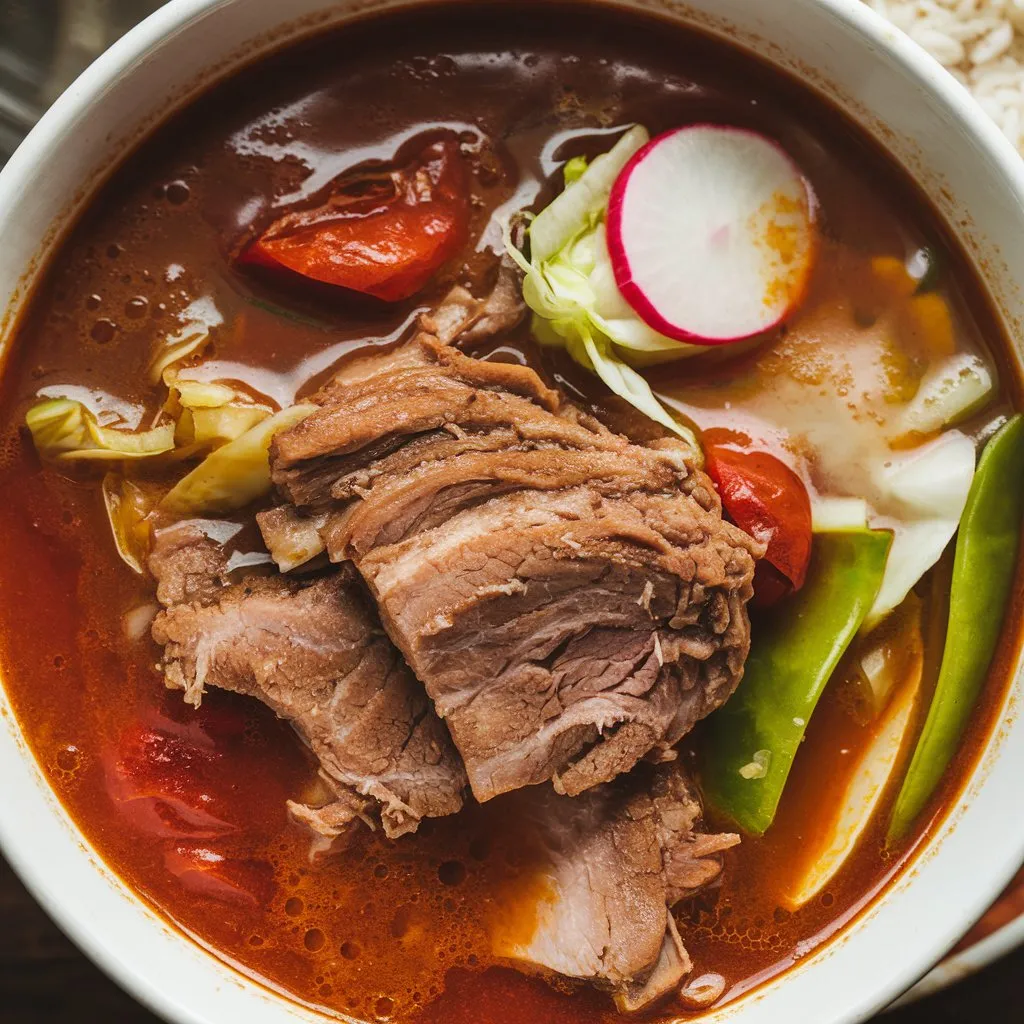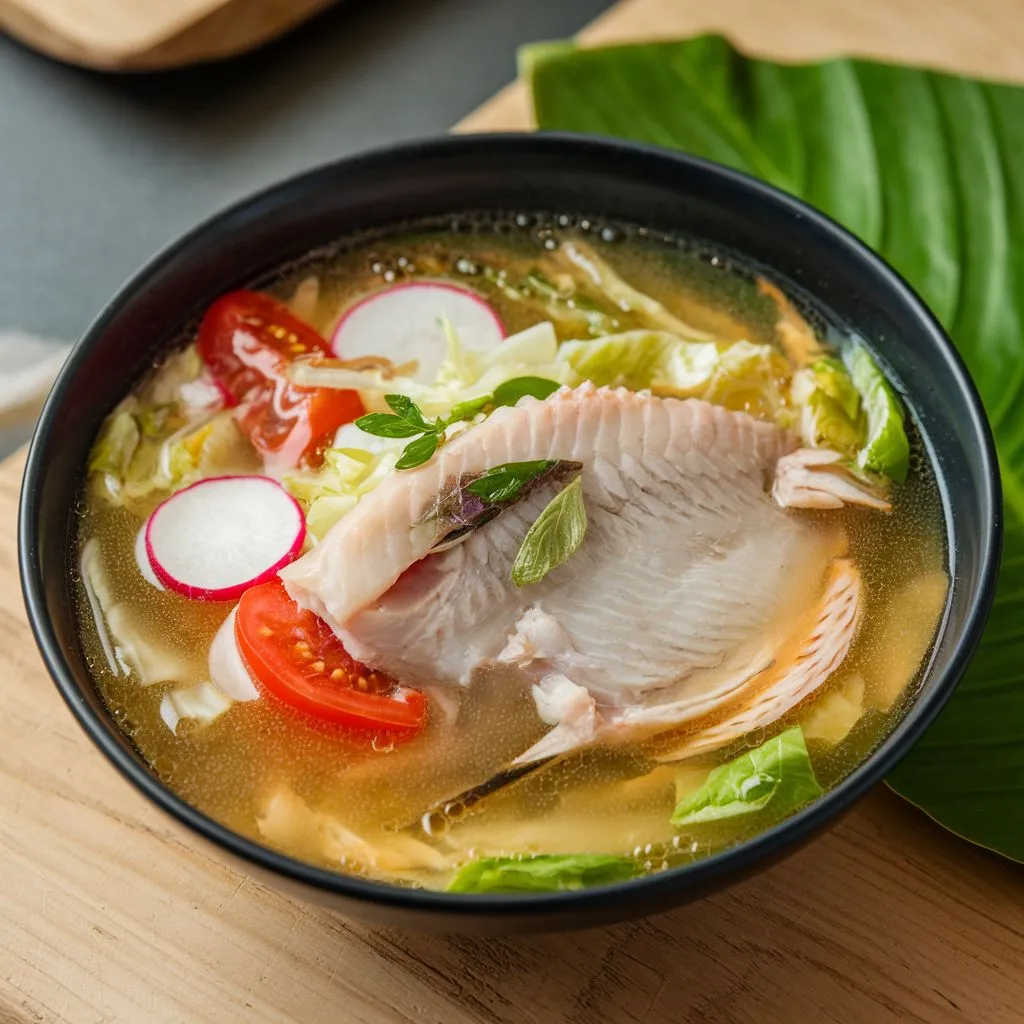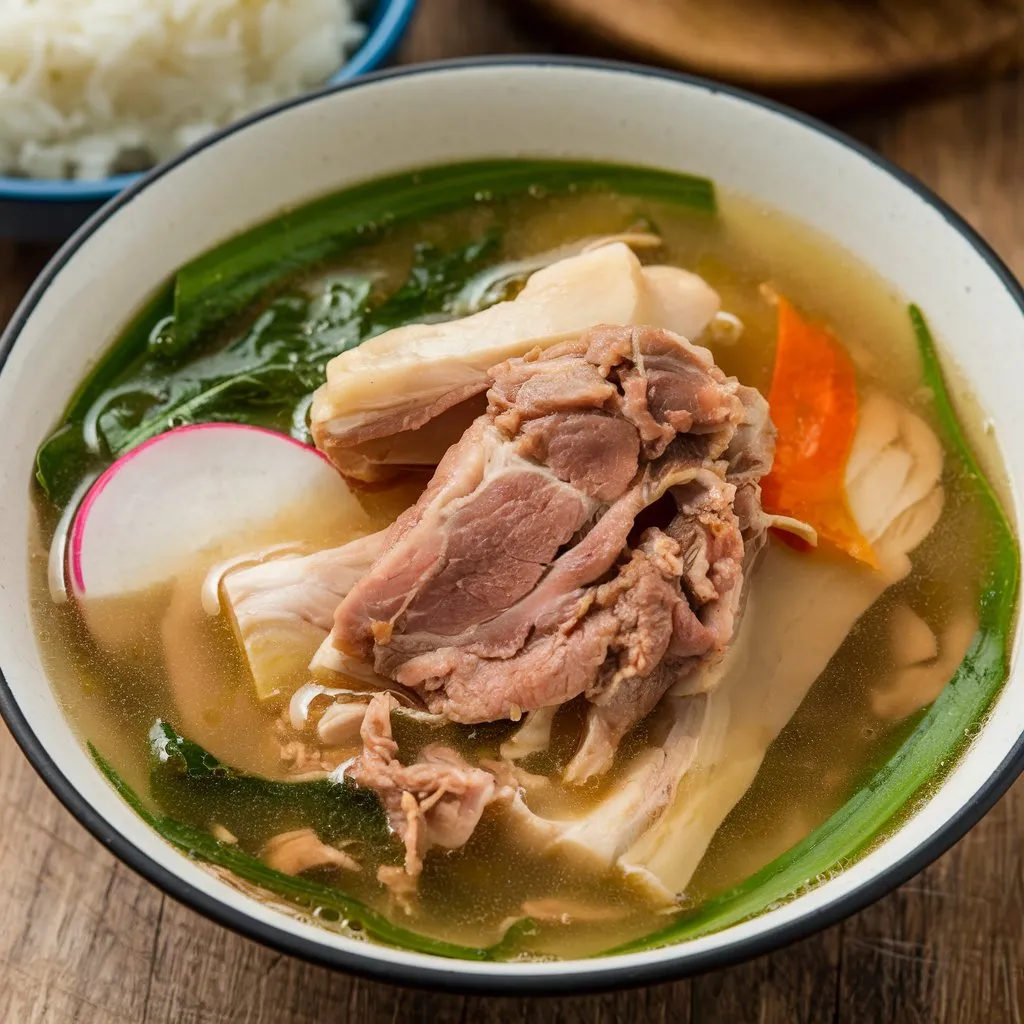Learn how to make authentic Sinigang, the tangy and savory Filipino soup loved for its comforting flavors. This step-by-step guide features classic ingredients like tamarind, pork, or shrimp, combined with fresh vegetables. Perfect for beginners or seasoned cooks, discover tips to create the ultimate Sinigang at home. Try this easy recipe today!
1. Pork Sinigang

Pork Sinigang, or Sinigang na Baboy, is a beloved Filipino sour soup characterized by its tangy broth, typically made with tamarind. Here’s a detailed recipe based on the search results:
Ingredients:
- 2 lbs pork belly (or other cuts like spare ribs)
- 4 cups water
- 1 large onion, quartered
- 3 medium tomatoes, quartered
- 1 cup daikon radish, sliced
- 1 cup string beans (sitaw), cut into 2-inch pieces
- 1 cup water spinach (kangkong) or spinach
- 2-3 pieces long green chili peppers (siling pangsigang)
- 2 pieces taro (gabi), peeled and cut in half
- Fish sauce (patis), to taste
- Salt and pepper, to taste
- 1 pack of sinigang mix (optional, for added flavor)
Instructions:
- Prepare the Pork: In a large pot, add the pork and cover it with water. Bring to a boil over medium heat. Skim off any scum that rises to the surface.
- Add Aromatics: Once the water is boiling, add the quartered onions and tomatoes. Let it simmer for about 5-10 minutes.
- Cook the Pork: Add the pork to the pot and let it boil for about 25 minutes. This will help tenderize the meat.
- Add Taro: After 25 minutes, add the taro and continue boiling for another 30 minutes until the pork and taro are tender.
- Season the Broth: Stir in the sinigang mix (if using), fish sauce, salt, and pepper to taste.
- Add Vegetables: Add the daikon radish, string beans, and green chili peppers. Cook for 7-10 minutes until the vegetables are cooked but still crisp.
- Finish with Greens: Finally, add the kangkong leaves or spinach. Please turn off the heat and let it sit covered for about 5 minutes to wilt the greens.
- Serve: Transfer to a serving bowl and enjoy hot with steamed rice on the side.
Tips:
- Adjust the sourness by adding more or less tamarind or sinigang mix according to your preference.
- You can also use other vegetables like eggplant or okra depending on availability.
- For a richer flavor, consider using bone-in cuts of pork.
This recipe captures the essence of Pork Sinigang, providing a hearty and comforting dish perfect for any occasion!
2. Sinigang with Pompano Fish

Sinigang na Pompano is a delicious Filipino sour soup featuring pompano fish, known for its mild flavor and firm texture. Here’s a detailed recipe to prepare this comforting dish:
Ingredients:
- 1 medium-sized pompano fish, cleaned and cut into serving pieces
- 4 cups water
- 1 small daikon radish, peeled and sliced
- 1 medium tomato, quartered
- 1 small onion, sliced
- 2 cloves garlic, minced
- 1 thumb-sized piece of ginger, sliced
- 2 tablespoons miso paste (optional, for added umami)
- 1 packet sinigang mix or 1 cup fresh tamarind juice
- 1 tablespoon fish sauce (or to taste)
- 1/2 cup okra, trimmed
- 1 bunch bok choy or water spinach (kangkong), washed and trimmed
- 2 long green chilies or Serrano peppers (optional)
- Salt and pepper to taste
Instructions:
- Sauté Aromatics: In a large pot, heat a little oil over medium heat. Add the minced garlic, sliced onion, and ginger. Sauté until fragrant and the onion becomes translucent.
- Prepare the Broth: Pour in 4 cups of water and bring it to a boil. Add the miso paste (if using) and stir until dissolved. Then, add the sinigang mix or fresh tamarind juice to give the broth its signature sour flavor.
- Cook the Vegetables: Add the sliced daikon radish and quartered tomato to the pot. Cook for about 5 minutes until the radish starts to soften.
- Add the Fish: Gently place the pompano pieces into the pot. Add okra and bok choy. Season with fish sauce, salt, and pepper to taste.
- Simmer: Let the soup simmer for about 10-12 minutes or until the fish is cooked through and flaky, and the vegetables are tender.
- Finish with Greens: If using long green chilies, add them in the last few minutes of cooking. Adjust seasoning as needed.
- Serve: Ladle into bowls and serve hot with steamed rice on the side.
Tips:
- Pompano is ideal for sinigang due to its ability to absorb flavors while maintaining its structure.
- You can substitute other firm white fish if pompano is unavailable.
- For an extra layer of flavor, consider adding other vegetables like eggplant or long green beans.
This Sinigang na Pompano recipe captures the essence of Filipino cuisine with its tangy broth and fresh ingredients, making it a perfect dish for any occasion!
3. Traditional Pork Sinigang

Traditional Pork Sinigang (Sinigang na Baboy) is a classic Filipino dish known for its tangy and savory flavor profile, primarily derived from tamarind. Here’s a detailed recipe based on the provided search results:
Ingredients:
- 1.5 lbs pork belly or pork ribs, cut into bite-sized pieces
- 4 cups water
- 1 medium onion, quartered
- 3 medium tomatoes, quartered
- 1 cup daikon radish, sliced
- 1 cup string beans (sitaw), cut into 2-inch pieces
- 1 cup taro (gabi), peeled and cubed
- 3 tablespoons fish sauce (patis)
- 3/4 cup tamarind paste (or adjust to taste)
- 1 bunch baby bok choy or water spinach (kangkong), washed and trimmed
- 2 long green chilies (optional)
- Salt and pepper to taste
Instructions:
- Prepare the Tamarind Paste:
- If using fresh tamarind, soak 4 ounces of tamarind pulp in 8 ounces of boiling water for about 30 minutes. Mash and strain to extract the juice, setting it aside.
- Sauté Aromatics:
- In a large pot, heat about 1 tablespoon of vegetable oil over medium-high heat. Add the pork pieces and sear until browned on all sides, about 5 minutes.
- Add the quartered onions and tomatoes; sauté until softened.
- Add Water and Simmer:
- Pour in 4 cups of water and add the fish sauce. Bring to a boil, then reduce the heat to medium-low. Cover and simmer for about 45 minutes to 1 hour, or until the pork is tender.
- Incorporate Vegetables:
- Add the sliced daikon radish and taro to the pot. Continue to simmer for another 10 minutes until they start to soften.
- Stir in the tamarind paste, adjusting the amount based on your desired level of sourness.
- Finish with Remaining Vegetables:
- Add the string beans and long green chilies (if using). Cook for an additional 5 minutes.
- Finally, add the bok choy or water spinach and cook just until wilted.
- Season and Serve:
- Taste the broth and adjust the seasoning with salt and pepper as needed.
- Serve hot with steamed rice on the side.
Tips:
- For a richer flavor, consider using bone-in cuts of pork.
- You can also add other vegetables like eggplant or okra based on your preference.
- The sourness can be adjusted by adding more tamarind paste or using fresh tamarind if available.
This recipe captures the essence of traditional Pork Sinigang, providing a hearty and comforting dish perfect for any occasion! Enjoy your cooking!
4. Salmon Sinigang with Miso

Salmon Sinigang with Miso is a flavorful twist on the traditional Filipino sour soup, incorporating miso for added depth and umami. Here’s a detailed recipe to prepare this comforting dish:
Ingredients:
- 1 lb salmon (fillet or belly), cut into chunks
- 4 cups water
- 1 medium onion, sliced
- 2 medium tomatoes, quartered
- 1 small daikon radish, sliced
- 1 cup taro, peeled and cut into cubes
- 1 cup string beans (sitaw), cut into 2-inch pieces
- 2 tablespoons white miso paste
- 2 tablespoons fish sauce (or to taste)
- 1 packet sinigang mix (optional, for additional sourness)
- 1 bunch bok choy or water spinach (kangkong), washed and trimmed
- 2 long green chilies (optional)
- Salt and pepper to taste
Instructions:
- Sear the Salmon:
- In a large pot, heat 1 tablespoon of oil over medium-high heat. Season the salmon with salt and pepper, then sear it for about 1-2 minutes per side until browned but not fully cooked. Remove from the pot and set aside.
- Sauté Aromatics:
- In the same pot, add the sliced onion and quartered tomatoes. Sauté for a few minutes until the onions are translucent.
- Add Miso and Water:
- Stir in the white miso paste, mixing it well with the onions and tomatoes. Pour in 4 cups of water and bring to a boil.
- Cook the Vegetables:
- Add the sliced daikon radish, taro, and string beans to the pot. Cook for about 5 minutes or until they start to become tender.
- Add Salmon Back to Pot:
- Gently add the seared salmon back into the pot. Cover and cook for about 5 more minutes or until the salmon is cooked through.
- Season the Soup:
- Add fish sauce and sinigang mix (if using) to achieve your desired level of sourness. Adjust with salt and pepper as needed.
- Finish with Greens:
- Stir in bok choy or water spinach and cook for an additional 2 minutes until wilted. If using long green chilies, add them at this stage.
- Serve:
- Turn off the heat and let it sit covered for a few minutes before serving.
- Serve hot with steamed rice on the side.
Tips:
- For a richer flavor, consider using salmon belly or head.
- Adjust the amount of miso based on your taste preference; you can also use other types of miso if desired.
- This dish is best enjoyed fresh but can be stored in an airtight container in the refrigerator for a day or two.
This Salmon Sinigang with Miso recipe combines traditional flavors with a modern twist, making it a comforting dish perfect for any occasion! Enjoy!
